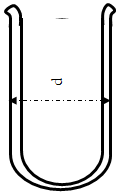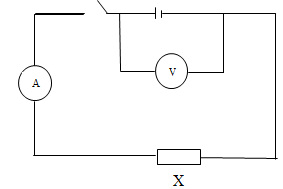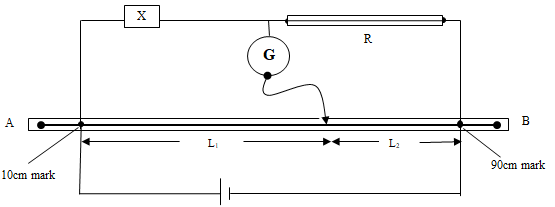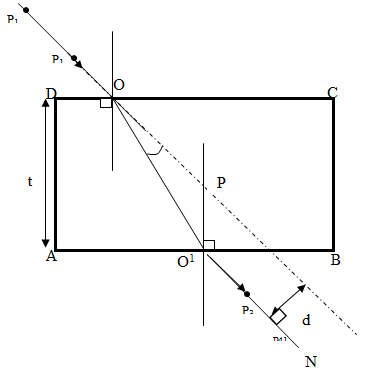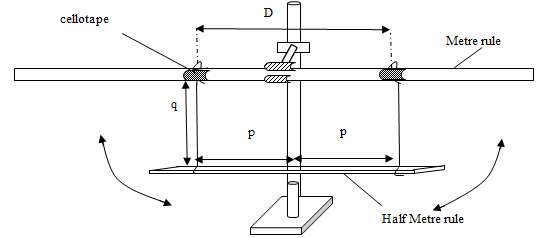SUKELLEMO JOINT MOCK
Kenya Certificate of Secondary Education
PHYSICS PAPER 3
2 ½hours
Instructions to Candidates
- Answer all the questions in the spaces provided.
- All working must be clearly shown.
- You are supposed to spend the first 15 minutes allowed for this paper reading the whole paper carefully before commencing your work and confirming your apparatus.
- Marks are given for a clear record of the observations actually made, their suitability, accuracy and for the use made of them.
- Candidates are advised to record observations as soon as they are made
- Non-programmable silent electronic calculators and KNEC mathematical tables may be used.
QUESTION ONE
PART A
You are provided with the following apparatus.
- meter rule.
- electronic beam balance ( shared)
- vernier callipers ( shared)
- measuring cylinder
- boiling tube.
Proceed as follows;
- Measure the length l of the boiling tube provided using a metre rule
l = (1mark) - Measure the external diameter d of the boiling tube at the middle using a Vernier callipers.
d=(1mark) - Calculate the external volume of the boiling tube. (1mark)
- Completely fill the boiling tube with water. Pour the water into the measuring cylinder Read and record the volume V2 of the water.
V2 = (1mark) - Calculate the volume V3 of the glass used to make the boiling tube. (1mark)
- Using the electronic balance measure the mass of the boiling tube
- Mass = (1mark)
- Determine the density of the glass. (1mark)
PART B
You are provide with the following
- A wire mounted on a millimetre scale labelled AB
- A galvanometer.
- Jockey
- A carbon resistor labelled X .
- 8 Connecting wires, 4 with crocodile clips at both ends.
- A resistance wire labelled R mounted on a half meter rule
- Ammeter
- Voltmeter
- One dry cell in a cell holder
- Micrometer screw gauge
Proceed as follows:
- Set up the circuit as shown below.
- Record the voltmeter reading when the switch is open.
E = (1mark) - Close the switch and record the voltmeter and ammeter readings V and I.
V = (1mark)
I = (1mark) - Explain why V is less than E . (1mark)
- Now connect the voltmeter across the carbon resistor X and record voltmeter reading V1 when the switch is on.
V1 = (1mark) - Determine X given that X = V1/I (1mark)
- Record the voltmeter reading when the switch is open.
- Using the micrometre screw gauge, measure and record the diameter D of the resistance wire R provided
D = (1mark) - Now connect another circuit as shown in the figure below.
Touch the 10cm mark and the 90 cm mark and see that the galvanometer deflects in opposite direction in each case.- Move the sliding jockey along the resistance wire AB and note the length L1 and L2 where the galvanometer pointer points at the zero mark. Record the values of L1 and L2.
L1 = (1mark)
L2 = (1mark) - Determine the resistance of the resistance wire R using the relationship, (2marks)
R/L1= X/L2 - Determine the resistance of the wire R per metre. (1 mark)
- Given that, R = 0.1114S determine the value of S , where R is the resistance per metre. D2 (1mark)
- Move the sliding jockey along the resistance wire AB and note the length L1 and L2 where the galvanometer pointer points at the zero mark. Record the values of L1 and L2.
QUESTION TWO
PART A
You are provided with the following;
- Soft board
- Vernier calipers
- Rectangular Glass block
- Four optical pins.
- Plain sheet of paper.
- Two thumb tacks
- Protractor
Procedure;
- Measure and record the width t of the glass block using the vernier calipers provided.
t = (1 mark) - Fix the white plain paper on the soft board using the two thumb tacks.
- Place the glass bock on the paper, trace its outline and label it ABCD ,as shown.
- Remove the glass block and draw a normal, say at point O.
- Draw a line making an angle of 300 with the normal to represent the incident ray.
- Replace the glass block carefully to its original position.
- Fix two pins P1 and P2 on the line in such a way that they are vertical and at least 4cm apart.
- Looking through the glass block through face AB, fix two pins P3 and P4 so that they are exactly in line with the P1 and P2. Mark the positions of P3 and P4
Join P3 and P4 and produce the line to meet face AB of the block at O1. Join O and O1. Measure angle O1OP.
Also, Measure angle- OO1P.
- O1OP = (1mark)
- OO1P = (1mark)
Measure the perpendicular distance d from the line O1N to OP produced. - d = (1mark)
- Determine t1 given that ,t1 = (dcos angle(OO1P)/sin angle O1OP . (2marks)
- How do the values of t and t1 compare . (1mark)
PART B
You are provided with the following:
- A metre rule
- Two Half metre rules
- Stop watch
- A complete retort stand
- Two pieces of thread
- Some cellotape
Proceed as follows:
- Set up the apparatus as shown in figure below such that D = 2p = 20cm and q = 20cm.
Ensure that D is kept constant throughout the experiment. (use a piece of cellotape to fix the threads).
Make sure that the loops of thread on the half metre rule can slide along the half metre rule. This would enable easy adjustments of distance p later in the experiment. The scale of the half metre rule should be kept in a horizontal plane.
The distance p is measured from the centre of the half metre rule. - Adjust the position of the loops on the half metre rule so that p = 21cm. (ie 2p = 42cm). You may use a cellotape to keep the loop in position. Measure and record in table 1 the value of q.
N.B q is the vertical distance between the half metre rule and the metre rule. - Slightly displace one end of the half metre rule towards you and the other end away from you in a horizontal plane such that when released, it oscillates in the same plane. Measure time t for 10 oscillations. Repeat the procedures (c) and (d) for other values of p .
- Complete the table. (8marks)
p(cm) 21.0 19.0 17.0 15.0 13.0 10.0 8.0 q(cm) Time t for 10
oscillationsPeriod time T(s) p/q -
- Plot a graph of T (y axis) against p/q (4marks)
- Determine the slope S of the graph when p/q=2.0 (2marks)
- Determine the constant k given that k= s/π √Dg where g = 10m/s2 (2marks)
CONFIDENTIAL
QUESTION ONE
- meter rule
- electronic beam balance ( shared)
- vernier callipers ( shared)
- measuring cylinder
- boiling tube.
- A wire mounted on a millimetre scale labelled AB(use a wire of diameter 0.45mm)
- A galvanometer.
- Jockey
- A carbon resistor labelled X .(10 ohm carbon resistor)
- 8 Connecting wires, 4 with crocodile clips at both ends.
- A resistance wire labelled R mounted on a half meter rule(use a wire of diameter 0.45mm fixed on half metre rule)
- Ammeter (range 0-1)
- Voltmeter (range 0-5 or 0-2.5)
- One dry cell in a cell holder
- Micrometer screw gaug
QUESTION TWO
- Soft board
- Vernier calipers.
- Rectangular Glass block of width 6.50 cm
- Four optical pins.
- Plain sheet of paper.
- Two thumb tacks
- Protractor
Students will also need:
- metre rule
- Two Half metre rules
- Stop watch
- A complete retort stand
- Two pieces of thread.(each 60cm) –preferably use a laboratory thread.
- Some cellotape
MARKING SCHEME
QUESTION ONE
PART A
You are provided with the following apparatus.
- meter rule.
- electronic beam balance ( shared)
- vernier callipers ( shared)
- measuring cylinder
- boiling tube.
Proceed as follows;
- Measure the length l of the boiling tube provided using a metre rule
l = (1mark)
- ± 0.2 deny 1/2 mk for missing unit
1d.p a must
- ± 0.2 deny 1/2 mk for missing unit
- Measure the external diameter d of the boiling tube at the middle using a Vernier callipers.
d= 2.46cm
- ± 0.05 deny 1/2 mk for missing unit
2d.p a must
- ± 0.05 deny 1/2 mk for missing unit
- Calculate the external volume of the boiling tube. (1mark)
- Substitution of value (a) and (b)
- Exact value or 4s.f. -deny 1/2 mk for missing unit
- Completely fill the boiling tube with water. Pour the water into the measuring cylinder Read and record the volume V2 of the water.
V2 = 62cm3
± 1cm3 deny 1/2 mk for missing unit - Calculate the volume V3 of the glass used to make the boiling tube. (1mark)
- Ancient in (c) - V2( exact subtraction)
- deny 1/2 mk for missing unit
- Using the electronic balance measure the mass of the boiling tube
- Mass = 0.0269 ± 0.0005
4 d.p a must
- Mass = 0.0269 ± 0.0005
- Determine the density of the glass. (1mark)
- Answer in (f) Answer in (c)
- Exact evaluation or 4 s.f( ignore units)
PART B
You are provide with the following
- A wire mounted on a millimetre scale labelled AB
- A galvanometer.
- Jockey
- A carbon resistor labelled X .
- 8 Connecting wires, 4 with crocodile clips at both ends.
- A resistance wire labelled R mounted on a half meter rule
- Ammeter
- Voltmeter
- One dry cell in a cell holder
- Micrometer screw gauge
Proceed as follows:
- Set up the circuit as shown below.
- Record the voltmeter reading when the switch is open.
E = 1.6 V
± 0.2 deny 1/2 mk for missing unit
1 d.p is a must. - Close the switch and record the voltmeter and ammeter readings V and I.
V = 1.0
± 0.2 deny 1/2 mk for missing unit
1 d.p is a must.
I = 0.09
1.0
± 0.2 deny 1/2 mk for missing unit
1 d.p is a must. - Explain why V is less than E . (1mark)
- Volts are lost in overcoming the internal resistance
- Volts are lost in overcoming the internal resistance
- Now connect the voltmeter across the carbon resistor X and record voltmeter reading V1 when the switch is on.
V1 = 1.0 V
± 0.2 deny 1/2 mk for missing unit
1 d.p is a must - Determine X given that X = V1/I (1mark)
Correct substitution
Exact evaluation or 4.s.f
Ignore units
- Record the voltmeter reading when the switch is open.
- Using the micrometre screw gauge, measure and record the diameter D of the resistance wire R provided
D = 0.00045
± 0.00005
5 d.p is a must, accept standard form of 1.d.p ie, 4.5 x 10-4 - Now connect another circuit as shown in the figure below.
Touch the 10cm mark and the 90 cm mark and see that the galvanometer deflects in opposite direction in each case.- Move the sliding jockey along the resistance wire AB and note the length L1 and L2 where the galvanometer pointer points at the zero mark. Record the values of L1 and L2.
L1 = 0.00035
± 0.00005
5 d.p is a must,
L2 = 0.00045
± 0.00005
5 d.p is a must, - Determine the resistance of the resistance wire R using the relationship, (2marks)
R/L1= X/L2- Correct substitution
- Exact evaluation or 4.s.f deny 1/2 mk for missing unit
- Correct substitution
- Determine the resistance of the wire R per metre. (1 mark)
- Correct substitution
- Exact evaluation 0r 4sf
- ignore units
- Given that, R = 0.1114S determine the value of S , where R is the resistance per metre. D2 (1mark)
- Correct substitution
- Exact evaluation 0r 4sf
- ignore units
- Move the sliding jockey along the resistance wire AB and note the length L1 and L2 where the galvanometer pointer points at the zero mark. Record the values of L1 and L2.
QUESTION TWO
PART A
You are provided with the following;
- Soft board
- Vernier calipers
- Rectangular Glass block
- Four optical pins.
- Plain sheet of paper.
- Two thumb tacks
- Protractor
Procedure;
- Measure and record the width t of the glass block using the vernier calipers provided.
t = (1 mark) - Fix the white plain paper on the soft board using the two thumb tacks.
- Place the glass bock on the paper, trace its outline and label it ABCD ,as shown.
- Remove the glass block and draw a normal, say at point O.
- Draw a line making an angle of 300 with the normal to represent the incident ray.
- Replace the glass block carefully to its original position.
- Fix two pins P1 and P2 on the line in such a way that they are vertical and at least 4cm apart.
- Looking through the glass block through face AB, fix two pins P3 and P4 so that they are exactly in line with the P1 and P2. Mark the positions of P3 and P4
Join P3 and P4 and produce the line to meet face AB of the block at O1. Join O and O1. Measure angle O1OP.
Also, Measure angle- t= 0.0650 , ±0.010
4 d.p a must - O1OP = 10o
±2 deny 1/2 mk for missing unit - OO1P = 20o
±2 deny 1/2 mk for missing unit
Measure the perpendicular distance d from the line O1N to OP produced. - d = ±0.002
3 d.p a must - Determine t1 given that ,t1 = (dcos angle(OO1P)/sin angle O1OP . (2marks)
- Correct substitution
- Exact evaluation 0r 4sf
- deny 1/2 mk for missing unit
- How do the values of t and t1 compare . (1mark)
- They are equal or approximately the same
- t= 0.0650 , ±0.010
PART B
You are provided with the following:
- A metre rule
- Two Half metre rules
- Stop watch
- A complete retort stand
- Two pieces of thread
- Some cellotape
Proceed as follows:
- Set up the apparatus as shown in figure below such that D = 2p = 20cm and q = 20cm.
Ensure that D is kept constant throughout the experiment. (use a piece of cellotape to fix the threads).
Make sure that the loops of thread on the half metre rule can slide along the half metre rule. This would enable easy adjustments of distance p later in the experiment. The scale of the half metre rule should be kept in a horizontal plane.
The distance p is measured from the centre of the half metre rule. - Adjust the position of the loops on the half metre rule so that p = 21cm. (ie 2p = 42cm). You may use a cellotape to keep the loop in position. Measure and record in table 1 the value of q.
N.B q is the vertical distance between the half metre rule and the metre rule.
- Slightly displace one end of the half metre rule towards you and the other end away from you in a horizontal plane such that when released, it oscillates in the same plane. Measure time t for 10 oscillations. Repeat the procedures (c) and (d) for other values of p .
- Complete the table. (8marks)
(All must be correct - 1mk)p(cm) 21.0 19.0 17.0 15.0 13.0 10.0 8.0 q(cm)(± 1.0) 17.0 18.0 19.0 20.0 20.7 20.0 19.8 Time t for 10
oscillations(± 2.00)8.50 9.50 10.50 10.50 12.50 13.50 17.50 Period time T(s) p/q
( Exact or 4 s.f - 1mk)
( qcm - 1 d.p)
(time t - 2d.p) -
- Plot a graph of T (y axis) against p/q (4marks)
- Curve - 1mk
- Accuracy - 1 mk
- S - 1/2 mk
- P - 1/2mk
- Determine the slope S of the graph when p/q=2.0 (2marks)
- Tangent line drawn at p/q= 2.0
- Change in y, change in x, marked independently
- Exact evaluation or 4.s.f.
- Ignore units but award 1/2 mk if candidate has second as a unit
- Determine the constant k given that k= s/π √Dg where g = 10m/s2 (2marks)
- Correct substitution
- Exact evaluation 0r 4sf
- deny 1/2 mk for missing unit
- Plot a graph of T (y axis) against p/q (4marks)
Download Physics Paper 3 Questions and Answers - Sukellemo Joint Mock 2020/2021.
Tap Here to Download for 50/-
Get on WhatsApp for 50/-
Why download?
- ✔ To read offline at any time.
- ✔ To Print at your convenience
- ✔ Share Easily with Friends / Students

